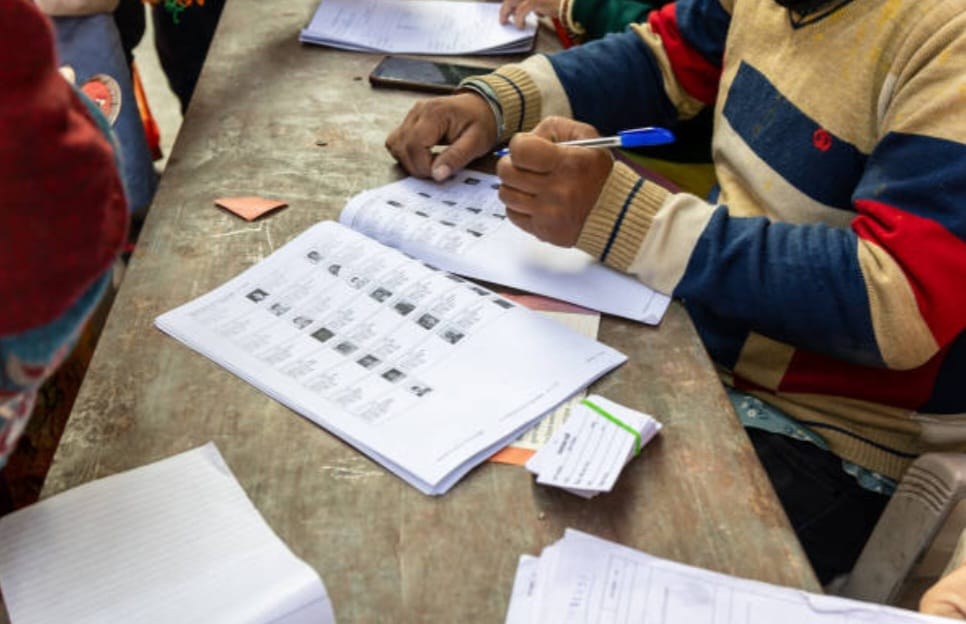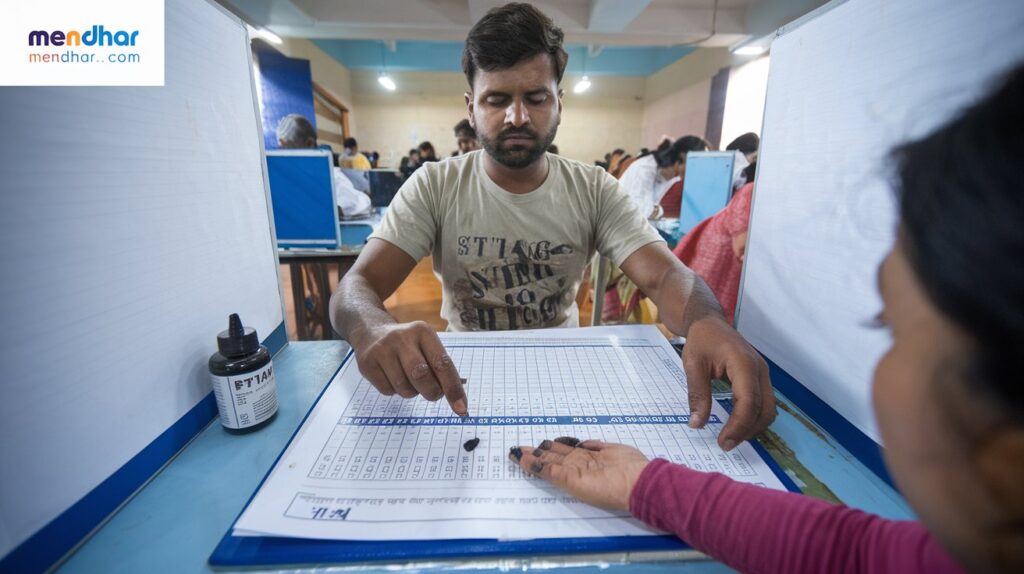My Voting Experience: A Journey with the EVM

It was a bright, crisp morning when I set off from home, clutching my voter ID card in hand, ready to exercise my democratic right. As the excitement of election day had built up over the weeks, I couldn’t help but feel a sense of pride and responsibility. The polling station, set up in a nearby government school, was a short walk from my house. As I approached, I could already see a crowd of voters arriving, all eager to participate.
Upon reaching the entrance, I was greeted by a group of police officers alongside personnel from the Central Reserve Police Force (CRPF), ensuring the area was secure and well-managed. Their presence reassured me that the process would be conducted smoothly and peacefully. I made my way through the school gate, walking towards the main entrance where the polling booths were set up.
There was a steady line of voters, patiently waiting for their turn, each holding their voter ID card like a ticket to democracy. The polling station was buzzing with activity, and the polling officers were clearly organized, helping to guide people through the process efficiently.
When it was finally my turn, I stepped inside the polling station—a spacious classroom temporarily converted for the election. The first desk I approached was manned by Polling Officer 1 (P1), who was responsible for verifying voter identities. I handed over my voter ID card, and he carefully cross-checked my details with the electoral roll in front of him. After confirming that I was eligible to vote, he asked me to proceed to the next station.


At the second desk, Polling Officer 2 (P2) sat with a large register, a bottle of indelible ink, and a serious expression. P2 was tasked with maintaining *Form 17A*, a crucial part of the election process. He carefully wrote down my serial number from the electoral roll, along with my name and the ID proof I had provided. Once all my details were recorded in Form 17A, he dipped a thin brush into the ink bottle and marked my left index finger with a dark streak—signifying that I had now been officially marked as having voted.
Next, I moved on to the third desk, where Polling Officer 3 (P3) was stationed. P3 had an important role—he controlled the *Ballot Unit* of the Electronic Voting Machine (EVM) from the *Control Unit*. After P2 had completed his task, P3 handed me a voting slip with my serial number and directed me to the EVM booth. He pressed a button on the Control Unit to activate the Ballot Unit, allowing me to cast my vote.

As I approached the EVM, I noticed the polling officer standing nearby, offering assistance to voters who were unfamiliar with the machine. However, I felt confident, having used the EVM in previous elections. Still, P3 gave me a gentle reminder: “Please press the button next to the candidate of your choice, and wait for the beep sound before leaving. The beep will confirm that your vote has been successfully recorded.”
I stepped into the voting booth, which was designed to ensure complete privacy. The EVM in front of me had a simple, user-friendly layout, with buttons corresponding to each candidate’s name and party symbol. I took a moment to review the list of candidates before pressing the button for my chosen representative.


I waited, and within a second, I heard the beep—just as P3 had explained. It was a small but significant sound, confirming that my vote had been recorded successfully. To double-check, I glanced at the *VVPAT (Voter Verifiable Paper Audit Trail)*, a small device next to the EVM. A slip appeared in the VVPAT window for about seven seconds, displaying the name and symbol of the candidate I had selected. After I verified my vote, the slip fell into a sealed box below the machine, offering another layer of transparency.
Relieved that everything had gone smoothly, I stepped out of the booth and thanked the polling officers. They nodded and smiled, reminding me of the importance of the role they played in ensuring the fairness of the election.
As I left the polling station, I reflected on how seamless the process had been. From the verification of my ID, to being recorded in Form 17A, to casting my vote with the EVM, each step was handled with care and precision. The presence of the beep sound after I pressed the button reassured me that my vote had truly been counted, and the VVPAT further confirmed that my selection had been accurately registered.
The experience left me with a renewed sense of confidence in the electoral system. The technology behind the EVM and the meticulous record-keeping with Form 17A made the process not only efficient but also transparent. As I walked back home, I glanced at the ink on my finger, now drying in the sun—a proud symbol of my participation in democracy.




Good job sir